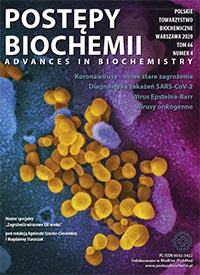Coronaviruses â a new old menace
DOI:
https://doi.org/10.18388/pb.2020_357Abstract
The current pandemic caused by novel coronavirus SARS-CoV-2 pandemic has been described as a global health emergency. The outbreak of this virus has raised a number of questions: what exactly is SARS-CoV-2? How transmissible the novel coronavirus is? How severely affected are patients infected with SARS-CoV-2? What are the risk factors for COVID-19? What are the differences between this novel coronavirus and other coronaviruses? To answer these questions, a comparative study of three pathogenic coronaviruses that primarily invade the human respiratory system and may cause death, namely, severe acute respiratory syndrome (SARS-CoV-1), Middle East respiratory syndrome (MERS-CoV) and severe acute respiratory syndrome coronavirus 2 (SARS-CoV-2) Middle East respiratory syndrome coronavirus (MERS-CoV). This review describes the source of origin, transmission,
and pathogenicity of these viruses. Prevention of SARS-CoV-2 spreading entails home isolation
of suspected cases and those with mild illnesses and strict infection control measures at hospitals that include contact and droplet precautions. The novel coronavirus spreads faster than its two predecessors â the SARS-CoV-1 and MERS-CoV â but has lower fatality rate. The global impact of this new pandemic is still uncertain, but it is a challenge to healthcare
systems around the world.
Downloads
Downloads
Published
Issue
Section
License
Copyright (c) 2021 Advances in Biochemistry

This work is licensed under a Creative Commons Attribution 4.0 International License.
All journal contents are distributed under the Creative Commons Attribution-ShareAlike 4.0 International (CC BY-SA 4.0) license. Everybody may use the content following terms: Attribution — You must give appropriate credit, provide a link to the license, and indicate if changes were made, ShareAlike — If you remix, transform, or build upon the material, you must distribute your contributions under the same license as the original. There are no additional restrictions — You may not apply legal terms or technological measures that legally restrict others from doing anything the license permits.
Copyright for all published papers © stays with the authors.
Copyright for the journal: © Polish Biochemical Society.




